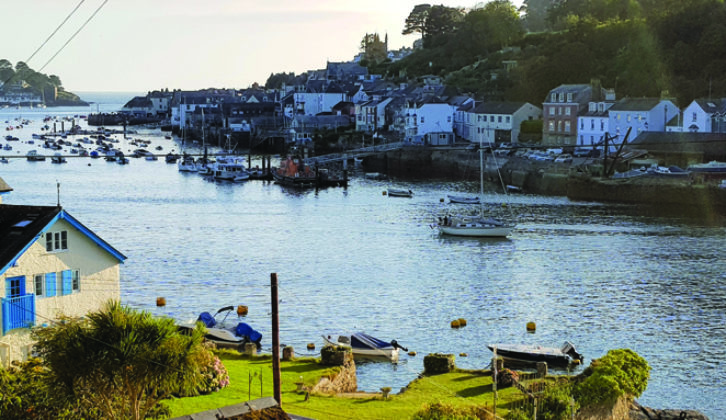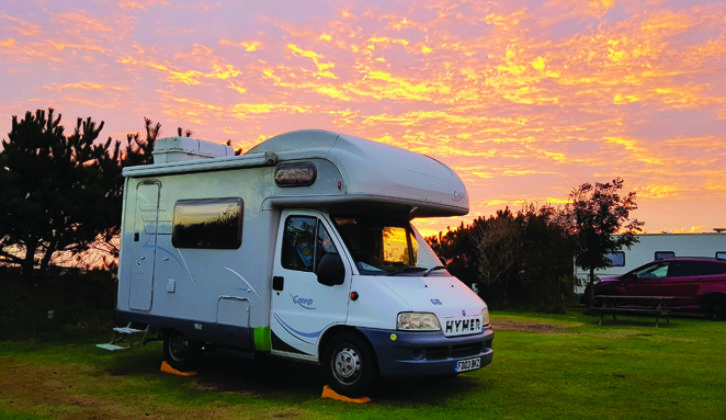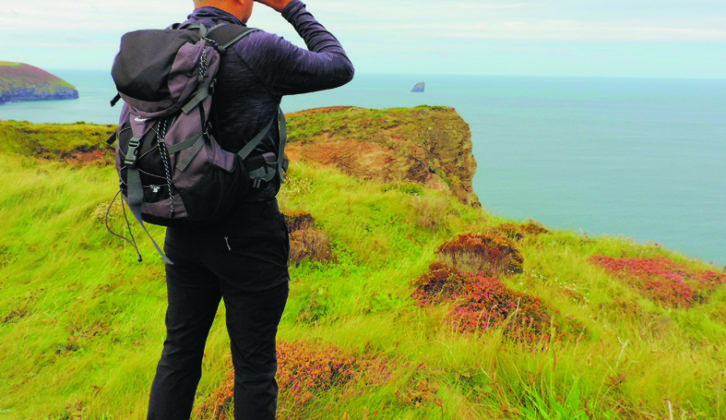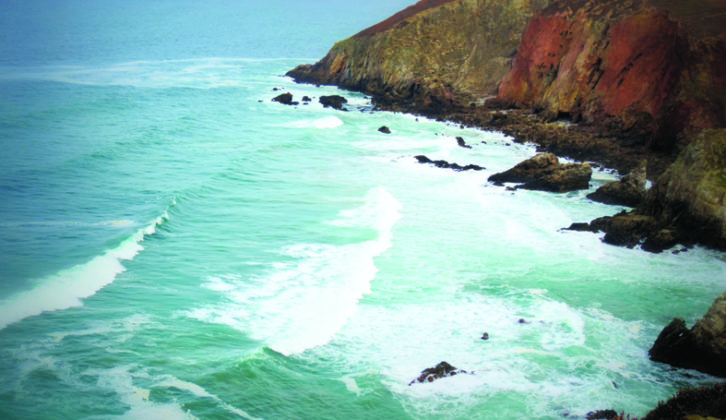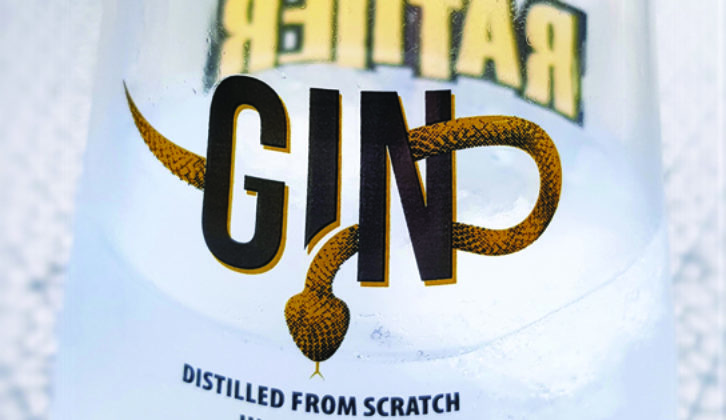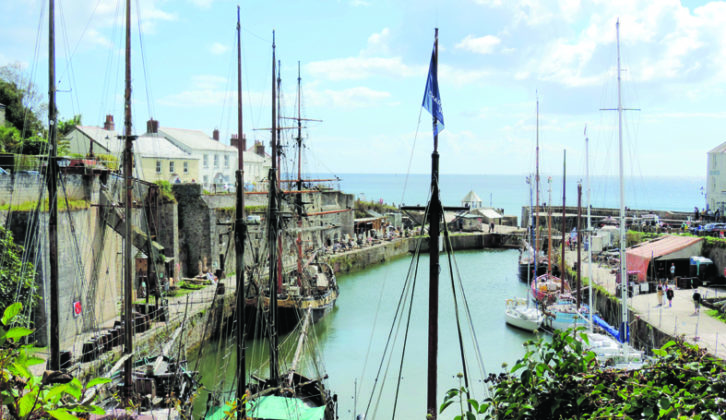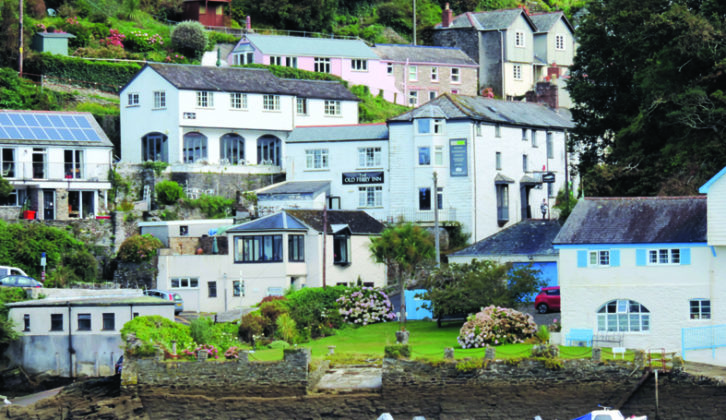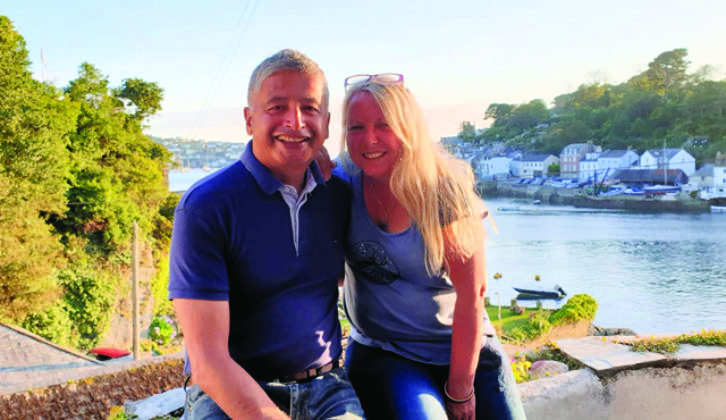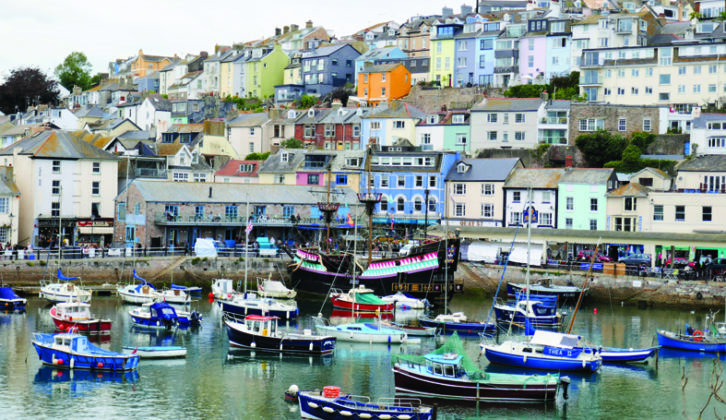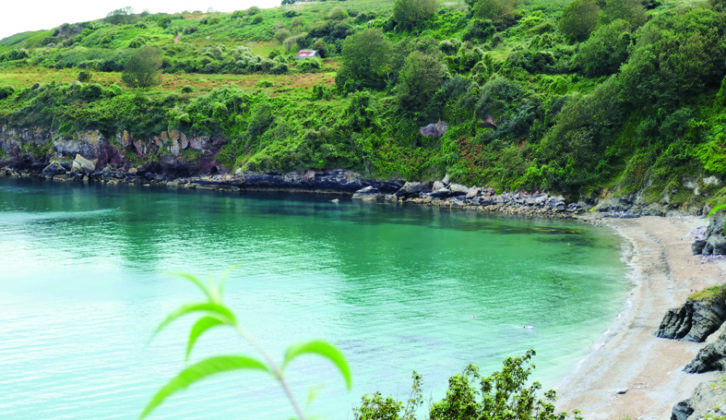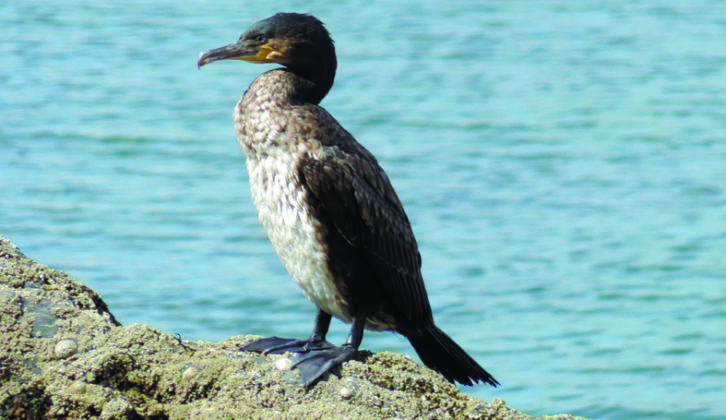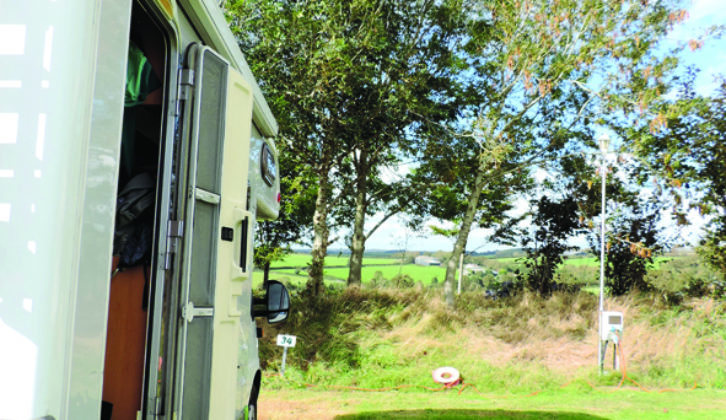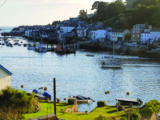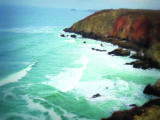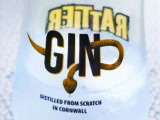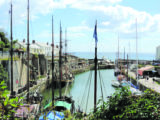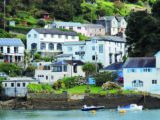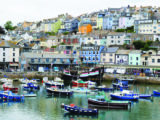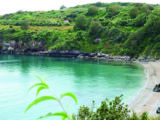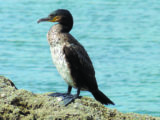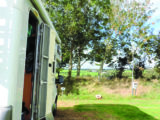Two Cornish coasts, north and south. Both rugged and beautiful, with plenty of walks to enjoy and villages to explore. Which to choose for our getaway to the great outdoors?
I’ve never been renowned for making decisions, and this one was particularly difficult, so in the end, we didn’t choose – we visited both.
Our first destination was the north coast and Blue Hills Touring Park, at Trevellas. This lovely, open site (named for the Blue Hills of the area’s slate-mining days) lies on the South West Coast Path, a 40-minute walk from the pretty village of St Agnes.
A small campsite anyway, the new social distancing rules meant the owners reduced the number of visitors, so we had plenty of space to stretch out in the fresh Cornish air.
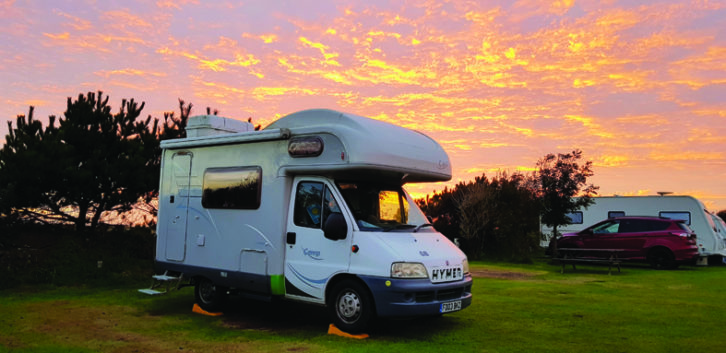
A crack-of-dawn departure from home meant we had arrived mid-morning, giving us loads of time to explore in the September sunshine.
Leaving Blue Hills through an old WWII airfield, once abuzz with Spitfires but decommissioned at the end of the war and now home to Perranporth Flying Club, the coast path stretches both left and right. The next decision – which way to turn? We chose left, to St Agnes, a relatively easy walk for the able-bodied along a well-made path.
We were accompanied on our way by gannets and black-backed gulls, screeching and swooping from their perches on the cliffs to the sea below. I could wax lyrical about the gorgeous views as the sunshine glinted off the Atlantic, but suffice to say, this walk is awe-inspiring.
Enjoying a pasty
When we reached St Agnes, our first task was to seek out a Cornish pasty – easy enough, as they are sold, it seems, on every corner.
Although these little bundles of delight began life as a dish for the rich, it is thanks to the wives of the Cornish tin-miners that they became the speciality we know today. They had thick crusts to be held in dirty working hands, some having their owner’s initials carved into that crust. It is thought this was to ensure that when scraps were left for the ‘Knockers’, mischievous sprites said to live in the mines, they knew who to thank!
Pasties are also apparently the origin of the cry, ‘Oggie, oggie, oggie’; this abbreviated version of the Cornish word hoggan, meaning pasty, was shouted down the mineshaft to let workers know the pasties were ready. They would then call, ‘Oi, oi, oi’ as they climbed up for their meal.
Ours were enjoyed sitting on a rock, watching surfers and brave paddlers at play. The smooth sandy beach is set in the shelter of Trevaunance Cove (good for making sandcastles, we thought) and at low tide, many rockpools appear at the base of the cliffs, great for younger holidaymakers (although you do need to be watchful for the changing tides if you go for a scramble about here).
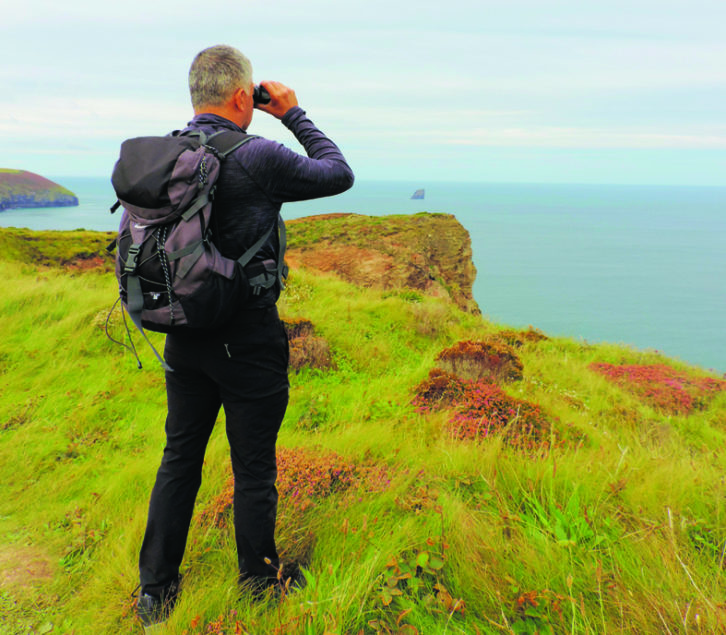
All around, you can see evidence of the historic mining industry, for which this area is famous. Perhaps less well-known, though, is the story of the harbour, originally built to open up trade routes with Wales and Ireland in the early 1700s.
Such were the difficulties of actually building a harbour here, that by the time of its completion, local landowners the Tonkin family had been made bankrupt by the project. The structure went unmaintained and was swept into the sea around 1730.
With the boom in tin – and copper-mining later that century, efforts were made to rebuild it; but it again fell into disrepair, was abandoned with the advent of the Great Western Railway in the 1800s, and succumbed to storms in 1915/16.
Museum and mine buildings
Regrettably, we didn’t have time to visit the St Agnes Museum or the National Trust mine buildings, notably Wheal Coates (a great excuse for a return trip!). Neither did we stay for an evening meal, although The Driftwood Spars looked very appealing as we passed by.
Our first evening was instead spent indulging in some experimental (motor)home cooking. Chicken fajitas with tortillas warmed in a frying pan, balanced precariously on the edge of our three-ringed hob, proved to be rather successful, especially when washed down with a glass or two of our favourite wine!
Next day, with the sun shining, we turned right on the South West Coast Path, to Perranporth. This stretch of the trail is more undulating and curvy, and at around 2.6 miles, a little further than the walk to St Agnes. We were prepared, after our practice session the day before! What we were not prepared for was the colourful spectacle of the heather, enough to drag our eyes away from that Atlantic coastline to focus on the land beneath our feet.
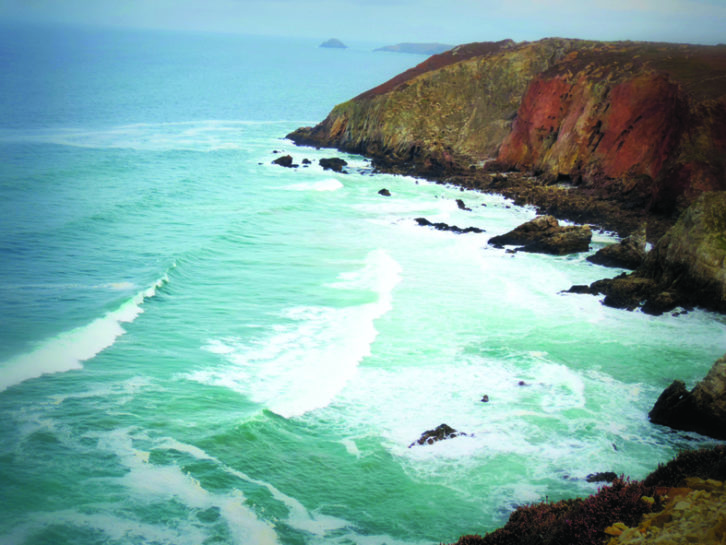
Perranporth itself is a magnet for surfers and holidaymakers alike, and it is easy to see why. As well as the busy town, with shops and pubs galore, it is blessed with miles of soft golden sand, perfect for families.
A walk, a pint, a takeaway
After a leisurely stroll around town and a couple of refreshing pints in the friendly and welcoming Tywarnhayle Inn, we returned to the site by taxi. Having been attracted by the delicious smell emanating from Jaipur Indian Cuisine, on St Pirans Road, we treated ourselves to dinner using their takeaway delivery service – which was very convenient (and tasty) indeed!
Next morning, the weather turned to rain, so we decided to head to Healeys Cornish Cyder Farm, a 15-minute drive from the campsite. Pre-booking is a necessity (thanks to Covid-19), but we had no trouble with a last-minute online booking, and were soon wandering around the various exhibits and learning the history, and the art, of cider-making Rattler-style.
There is something for everyone here, with animals and a land train for the children, and cider and spirits to taste for the adults.

Joy of joys for this fine drinker, they even make Rattler gin – perfect when facing the decision of which tipple to buy, the best of both worlds! It was worth braving the rain for such a treat.
We bade a sad farewell to this stretch of the Cornish coast, turning our thoughts to the south. We decided to avoid the obvious tourist destination of the Eden Project, and instead visit its near neighbour, Fowey.
Heritage in Charlestown
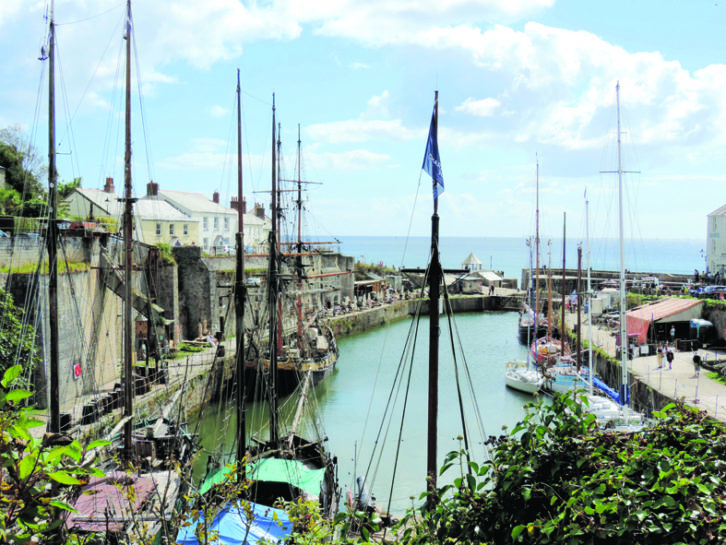
A quick peek at the map told us that a 50-minute drive, coast to coast, would bring us to the very picturesque Georgian town of Charlestown, en route to our next campsite.
A UNESCO World Heritage Site, Charlestown is renowned as a film location for dramas such as Poldark and Hornblower. Even Dr Who has visited, so we were in illustrious company indeed!
After an enjoyable hour or so walking around the shops and admiring the tall ships, we craved a Cornish cream tea. I blame the sea air. Said craving was satisfied at the Short & Strong Café, by the harbour, one of several we could have chosen.
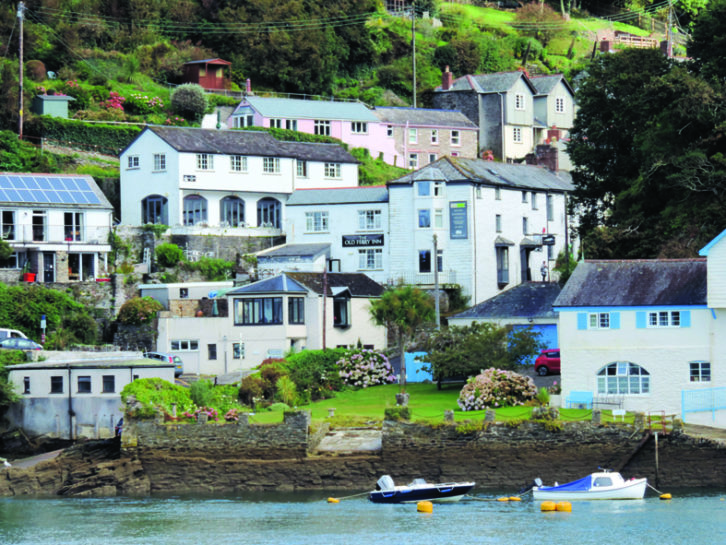
Then it was time for the 40-minute drive to Boddinick, a village near Fowey and the location of our next campsite. Although you can take a shorter route via the Fowey/Boddinick ferry, this involves negotiating narrow roads, and Fowey with its tourists and twisting lanes.
Boddinick is a little village on a big slope. All downhill from Penmarlam Caravan & Camping Park, so at first we wondered what all the fuss was about. But the further we walked, the steeper it became, until we finally reached the River Fowey. Your reward is either a visit to The Old Ferry Inn, which started life hundreds of years ago as a coaching inn serving weary travellers and is still doing so today, or a five-minute river crossing to Fowey. We chose both, booking a meal at the pub for that evening before heading across the river to explore.
Originally (and still) a pretty and prosperous coastal town, whose natural harbour enabled it to become an important training centre, most notably for china clay, Fowey is today also blessed with several thriving art galleries.
To buy, or not to buy
We found ourselves with yet another dilemma – should we buy a piece of original art from the quirky ‘Art for Serious People’? Not to worry, we would be back the next day and could decide then. For now, we were content to wander the narrow streets, admiring houses on steep terraces and browsing the shops, bakeries and galleries.
Having worked up a good appetite with all that window-shopping, we were looking forward to our meal at the inn. After apéritifs on the terrace, a sun trap with fantastic views over the river to Fowey, and with Daphne du Maurier’s first home, ‘Ferryside’, nestled on the slope below us, we settled in the snug to enjoy a meal of grilled sea bream for me, and mussels for Ro.
Next day, we knew we wanted to venture onto the water – but should we go for a trip on a ferry, or hire our own boat? Yes, you guessed, we did both.
First was the ferry riders from Fowey to Mevagissey. We had hoped to spot some dolphins during the trip, but were told we were the first boat of the season not to do so – a good reason for a return visit!
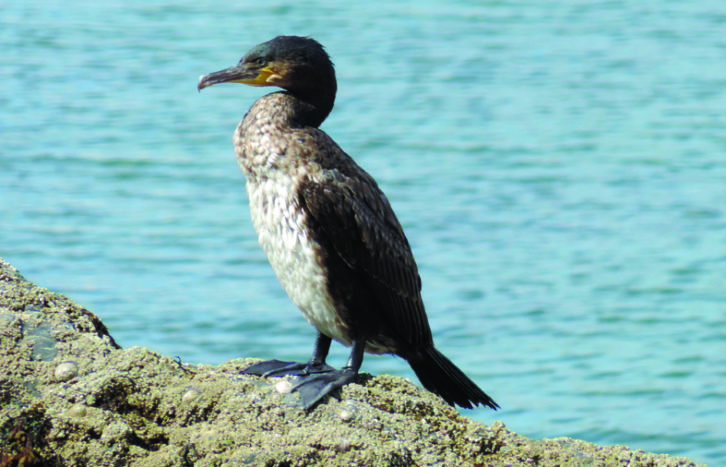
Mevagissey is a very pretty village, well worth a couple of hours’ exploration. Then it was back to Fowey and onto our own little motorboat. Armed with pasties, we headed out into the river and ate in splendid isolation. Then we motored past our campsite, gazed at the ships in the harbour, and pottered past Polruan on the opposite bank, before heading back to land.
We couldn’t leave Fowey without sampling the local ale, so enjoyed the last of the autumn sun outside the oldest pub in town, The Ship Inn, fortifying ourselves for the climb back to the site!
A little detour into Devon
Feeling as though we had barely scratched the surface of either Cornish coast, it was sadly time to leave; but not quite ready to return home, we headed along the coast into Devon.
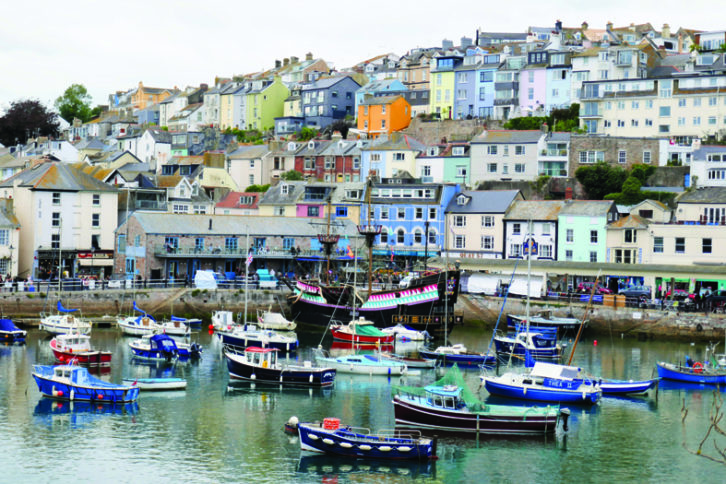
We have been to Brixham many times, but couldn’t resist another visit. We stayed at Wall Park Touring, a short (downhill) walk from the harbour and the welcoming Prince William pub.
The views across the water, with numerous fishing and pleasure boats, to the multicoloured homes on the opposite bank, are glorious, and we never tire of sitting here with a tipple.
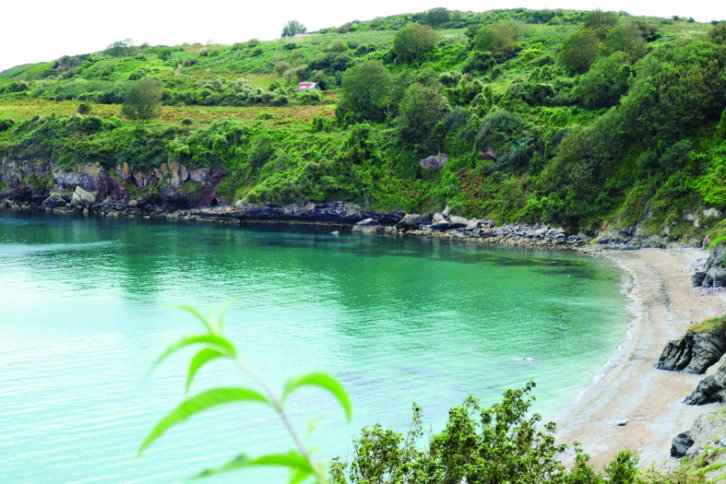
By now, the weather was starting to close in on us as autumn began to take more of a hold. Undeterred, we opted for a walk around Berry Head and the cliffs at St Mary’s Bay, taking in lush coastal views which could just as easily be somewhere in Europe as the coast of England – no wonder this beautiful part of the country is known as the English Riviera.
A meal in The Cow Shed – a quirky bar and grill down a quiet side street which also boasts a very fine gin menu – a final night in our comfortable motorhome, and our trip was over.
Oh, and we were taking something extra home with us, too – that unique piece of artwork from Fowey will look great on our lounge wall!
Are you thinking of embarking on your own tour of this beautiful county? Then be sure to take a look at our guide to the best caravan sites in Cornwall.
TOUR ESSENTIALS
Where we stayed
Blue Hills Touring Park
- Cross Coombe, Trevallas, St Agnes, TR5 0XP
- (best approached via M5 and A30)
- Web bluehillscamping.co.uk
- Open Easter to October
Penmarlam Caravan & Camping Park

- Bodinnick, Fowey, PL23 1LZ
- (best approached via A390 to avoid Fowey)
- Web www.penmarlampark.co.uk
- Open 1 March – 31 October
Wall Park Touring and Centre Road Camping Site
- Centry Road, Berry Head, Brigham, TQ 5 9ET
- (We arrived via A38 and A385; if travelling from the north, take A30 and A380 from Exeter)
- Web www.centrytouring.co.uk
- Open 1 April – 31 October
Find out more
If you liked this… READ THESE:
If you’ve enjoyed reading this article, why not get the latest news, reviews and features delivered direct to your door or inbox every month. Take advantage of our brilliant Practical Motorhome magazine SUBSCRIBERS’ OFFER and SIGN UP TO OUR NEWSLETTER for regular weekly updates on all things motorhome related.
The views across the water, with numerous fishing and pleasure boats, to the multicoloured homes on the opposite bank, are glorious
